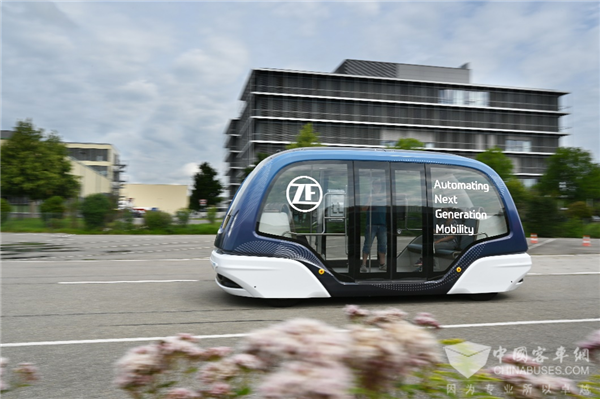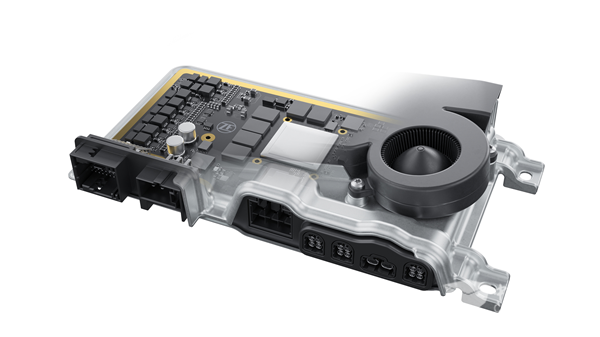ZF: A high-performance computer platform supporting L2-L5 autonomous driving will be mass-produced in 2024

Bus.com received news from Munich, Germany. ZF showcased its autonomous driving technology and other innovative solutions at the 2021 Munich Motor Show (IAA 2021) with the theme of “The next generation of travel is now.” The new generation of ZF’s ProAI supercomputer has laid the foundation for the realization of L5 autonomous driving functions. At the same time, ZF has also invested in the research and development of new modes of travel, such as effectively expanding the existing automatic connection system of urban public transportation.
The core of the new electronic and electrical architecture (such as the architecture required for autonomous driving functions) is a high-performance computer, which can be used as a central computer or as an electronic control unit for a domain or area. The ZF “ProAI” supercomputer was born for this, and completed its European debut at the Munich Motor Show.
Torsten Gollewski, Executive Vice President of ZF’s Automated Mobility Systems Division, said: “Our strategic goal is to provide technical support for the’next-generation mobility’. ZF already has future cars and All the necessary technologies required for a travel concept. Our “Cai Ruixing” (ProAI) can cover a wide range of applications for each model and support various levels of automatic or autonomous driving.”
The new generation of ProAI is currently the most flexible and powerful high-performance computer in the automotive industry. Compared with the previous generation, its computing power is increased by 66% and energy consumption is reduced by 70%. The artificial intelligence of this supercomputer is optimized for deep learning, making advanced security features further enhanced. It combines all available sensor information through a 360° graphics processor, including environmental measurement data from cameras, radar, lidar, and audio pattern recognizers.
In addition, the new generation of “ProAI” (ProAI) has a more compact structure and significantly saves installation space: a unified 24 x 14 x 5cm standard housing is adopted, which means that it occupies a smaller area than an iPad. According to industry requirements, this high-tech in-vehicle internal system is highly adaptable and reliable even under extreme conditions, while also providing the latest protection measures against cyber threats. The modular design of the supercomputer allows it to be equipped with system-on-chip (SoC) solutions from different manufacturers to meet the customer’s preferred solution. At the same time, it can run ZF’s own software or software systems provided by third-party suppliers. Standardized connectors and can be connected with more ZF “Zerui Star” (ProAI) components on demand, and can be flexibly mounted on any vehicle type.
ZF’s high-performance computers provide a high degree of flexibility and can achieve up to 1000 TeraOPS of computing power (equivalent to one quadrillion calculations per second). At present, ZF’s high-performance computer platform has received several important orders from the passenger car and commercial vehicle fields, and mass production will begin in 2024.
Automatic connection system
In addition to ProAI, ZF also provides necessary technical support for future autonomous vehicles and travel concepts, such as the research and development of autonomous connection systems. ZF has acquired a 100% stake in the Dutch company 2getthere, which has many years of experience in the field of autonomous driving systems. The automated system developed by it has transported 14 million passengers and has a mileage of more than 100 million kilometers. ZF participated in the German RABus project and is currently developing automatic connection systems for the German cities of Mannheim and Friedrichshafen. In the Rivium business park near Rotterdam, the 2getthere automatic connection system has been in operation for many years, and ZF is currently upgrading these systems to the latest version
.
In the future, the automatic connection system can effectively expand the existing public transportation network, thereby helping to reduce carbon emissions. The picture shows the self-driving shuttle bus developed by 2getthere, a subsidiary of ZF.
Torsten Golwski said: “The automated electric shuttle bus based on the application can effectively expand the existing public transportation service network in the city, and it can also better connect the countryside and the city.”
This will help reduce congestion and carbon emissions, improve people’s quality of life, and help sustainable travel.
ZF will announce more information about the automatic connection system at the Intelligent Transportation Systems World Conference (ITS) in October, and explain the role ZF has played in the construction of the system.
